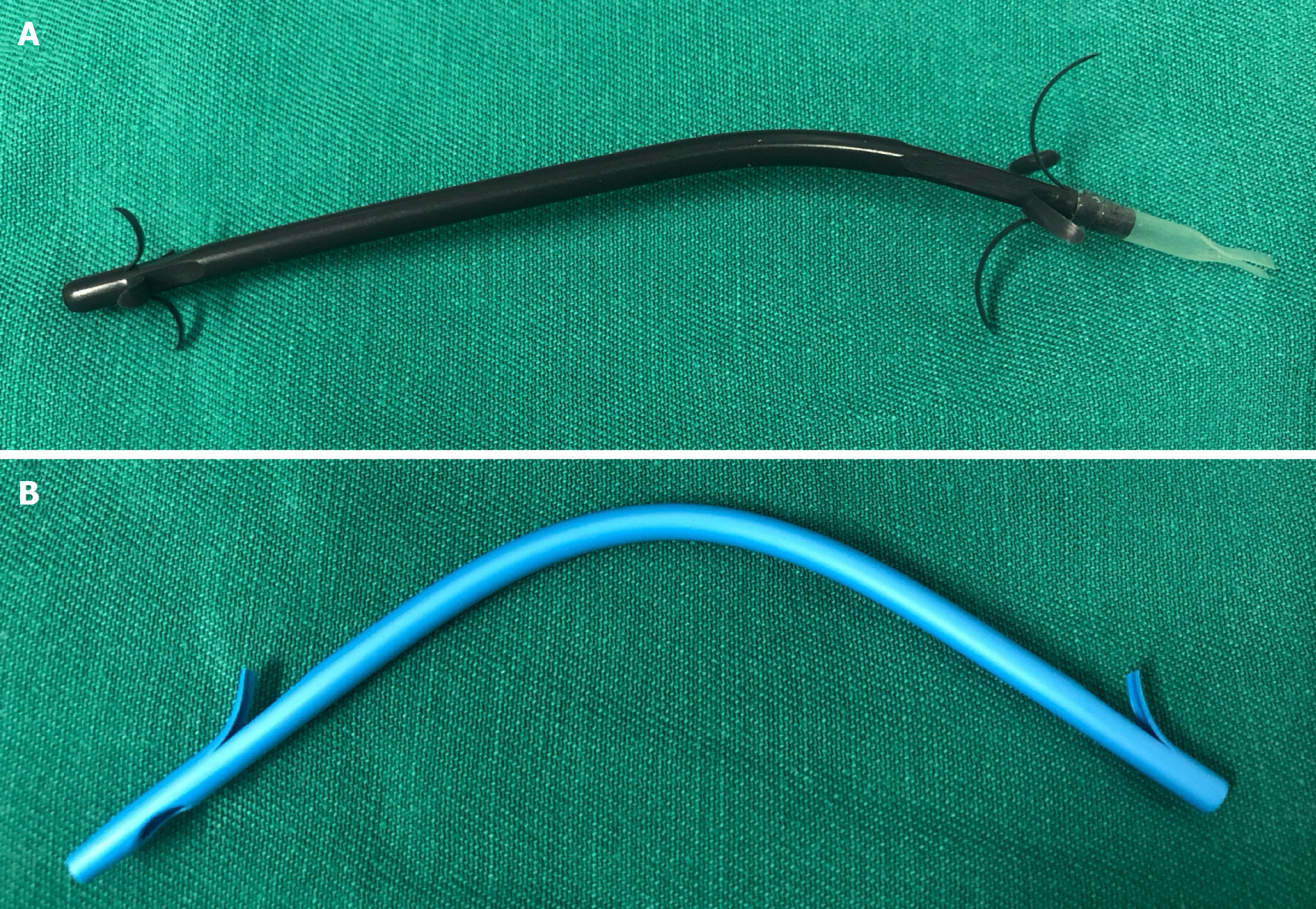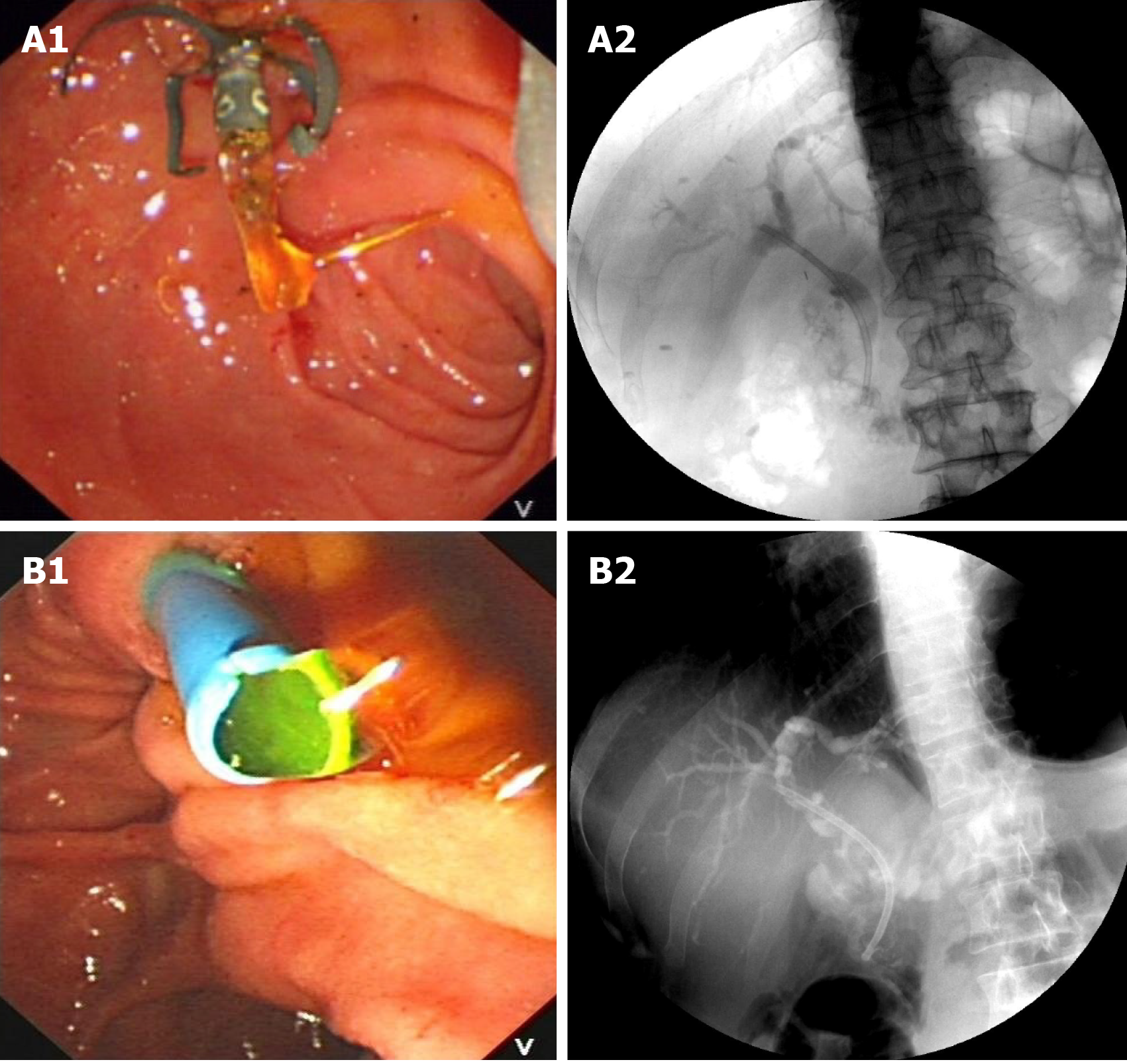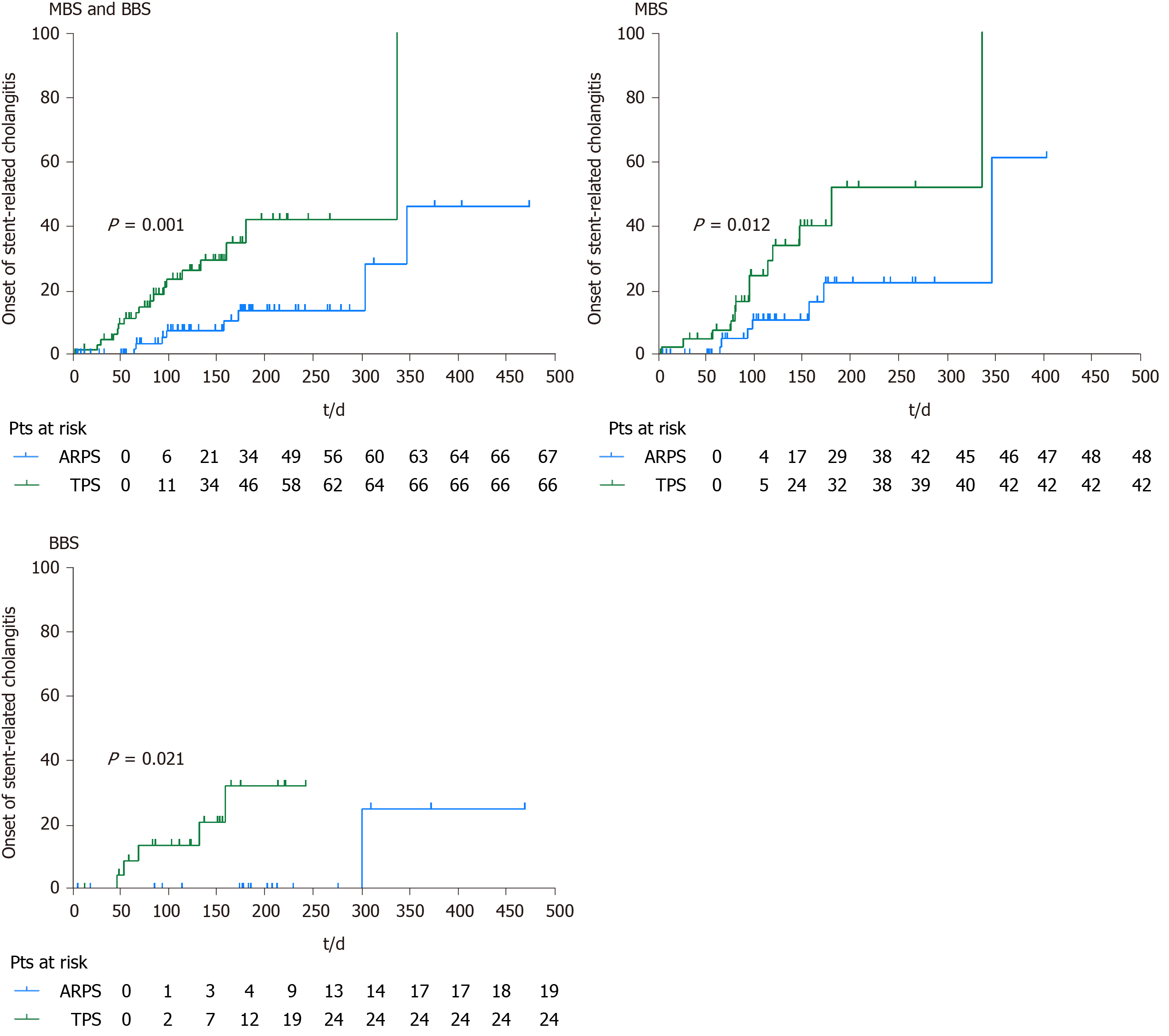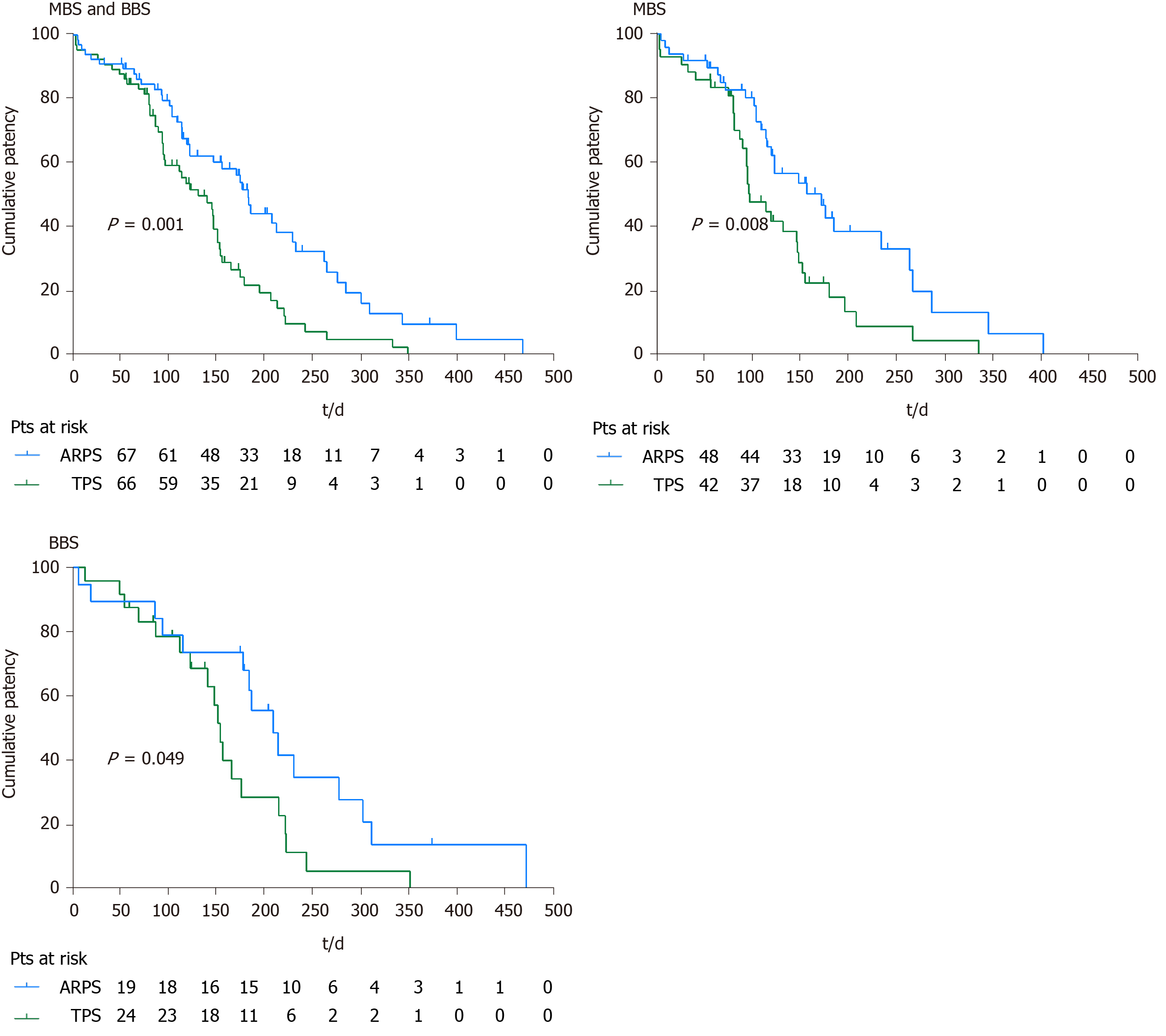Copyright
©The Author(s) 2021.
World J Gastroenterol. Jul 28, 2021; 27(28): 4697-4709
Published online Jul 28, 2021. doi: 10.3748/wjg.v27.i28.4697
Published online Jul 28, 2021. doi: 10.3748/wjg.v27.i28.4697
Figure 1 Biliary stents used in this study.
A: The new anti-reflux plastic stent; B: The traditional plastic stent.
Figure 2 Successful endoscopic placement of an anti-reflux plastic stent or a traditional plastic stent.
A1 and A2: Endoscopic and fluoroscopic images of an anti-reflux plastic stent; B1 and B2: Endoscopic and fluoroscopic images of a traditional plastic stent.
Figure 3 Flowchart.
PTCD: Percutaneous transhepatic cholangial drainage; SEMS: Self-expandable metal stents; ARPS: Anti-reflux plastic stent; TPS: Traditional plastic stent. MBS: Malignant biliary stricture; BBS: Benign biliary stricture.
Figure 4 Kaplan-Meier curves of onset of stent-related cholangitis of anti-reflux plastic stent and traditional plastic stent (Log-rank test).
MBS: Malignant biliary stricture; BBS: Benign biliary stricture; Pts: Patients; ARPS: Anti-reflux plastic stent; TPS: Traditional plastic stent.
Figure 5 Kaplan-Meier curves of cumulative patency of anti-reflux plastic stent and traditional plastic stent (Log-rank test).
MBS: Malignant biliary stricture; Pts: Patients; ARPS: Anti-reflux plastic stent; TPS: Traditional plastic stent.
- Citation: Yuan XL, Ye LS, Zeng XH, Tan QH, Mou Y, Liu W, Wu CC, Yang H, Hu B. New anti-reflux plastic stent to reduce the risk of stent-related cholangitis in the treatment of biliary strictures. World J Gastroenterol 2021; 27(28): 4697-4709
- URL: https://www.wjgnet.com/1007-9327/full/v27/i28/4697.htm
- DOI: https://dx.doi.org/10.3748/wjg.v27.i28.4697

















